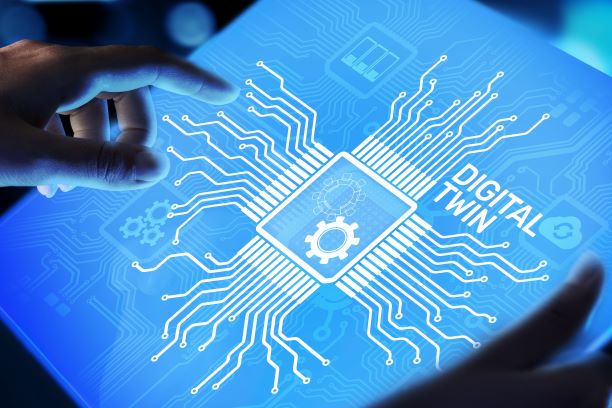Digital Twins: Transforming the infrastructure sector
Posted 29/04/2020 by Ivan Sacco

The current digitalisation of the infrastructure industry is based on the use of multiple technologies working simultaneously. The Internet of Things, Big Data, Machine Learning and Artificial Intelligence are just some of the changes underway that bring numerous benefits to businesses and consumers around the world. This journey of digital transformation has gained new momentum with additional use of Digital Twins, a digital representation capable of improving cost efficiencies and simplifying processes.
The aim of Digital Twin technology is to create a real-life digital representation of any physical element, taking into consideration the way or dynamics in which that element interacts and relates to other elements. NASA was the first to use this technique to simulate spacecraft stress tests using reduced-scale models. For instance, this was used to simulate the Apollo 13 mission rescue scenarios. Since then, this approach has been extended to a range of sectors, such as manufacturing, power generation, aircraft engines, healthcare, infrastructure, and many more.
How does Digital Twin technology work in the infrastructure sector?
Like other businesses, the infrastructure sector is about to undergo a profound transformation underpinned by digital technologies. Digital Twins is a new concept for this business, and it has been, little-by-little pursued by owners and operators of infrastructure assets.
Two factors will contribute to the increased use of Digital Twins in the infrastructure sector in the coming years. Firstly the fast-paced development of the use of technologies, such as the Internet of Things (IoT), data analysis and artificial intelligence. Secondly the use of BIM (Building Information Modelling) facilitating the creation of a digital representation of real infrastructure assets. Then, via the combination of the BIM models with the information collected by IoT sensors and data analysis, a Digital Twin can be formed.
Why do we need smart infrastructures?
Digital Twins offer abundant opportunities to improve the efficiency of an operation and maintenance of an asset. Nowadays, the asset conditions are monitored manually by periodic inspection. In the case of the Digital Twins, the flow of information between the virtual model and the asset can be made two-way in real-time, through sensors or other devices.
For instance, a Digital Twin of a motorway can capture a vast amount of data on the asset's operation and maintenance performance, such as pavement conditions, traffic volume, damage records, drainage conditions and others. A sophisticated algorithm would then be able to determine the overall condition of the motorway, and the result could be visualised and evaluated at any time. Next, the Digital Twin will inform what necessary immediate operations and maintenance work is required to optimise costs and prolong the lifetime of the asset.
Additionally, by collecting this data, it is possible to create a Digital Twin from an asset that does not yet exist. Through the use of data from a real asset, it is possible to plan a new project, virtually, even before any construction activity is carried out in the real world. This virtual model, in turn, will offer very relevant insights to drive infrastructure efficiencies.
Thinking big
A further step in the use of this technology would be the development of simulations to evaluate a number of scenarios generated by hypothetical circumstances. The benefits of this approach are infinite. For example, a country that implemented a network of Digital Twins should be able to assess, the impact of climate change within a relatively short timeframe, and make decisions to minimise disruption, optimise costs and mitigate the shortening of the useful lifespan of its infrastructure assets.
What is next?
Although the benefits of Digital Twins are numerous, there are still drawbacks that make it difficult to be wholly implemented in the short term. The difficulties vary from the imperfect implementation of the BIM, skills shortage and the lack of compatibility between old systems and databases.
Nevertheless, more and more infrastructure projects have started to adopted this technique. Some of the notable examples of recent applications are the Crossrail Project and the Copenhagen Airport. Additionally, a range of national initiatives have been established, such as the UK’s National Digital Twin Program that facilitates and standardises the application of the Digital Twins to the UK infrastructure sector.
Regardless of the implementation challenges, there is no question of the advantages of the usage of the Digital Twins in the infrastructure sector. The world is passing through a profound process of digital transformation, which involves the use of Digital Twins, and there is no backward step.